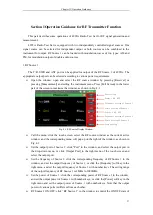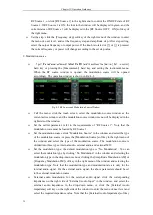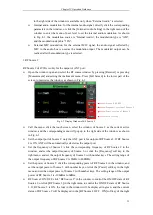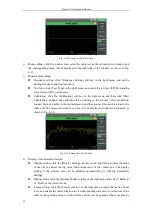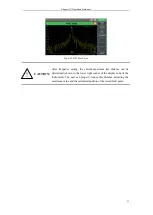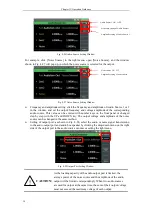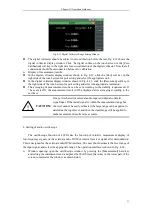
Chapter IV Operation Guidance
37
Fig. 4-10 Display Window of Frequency Modulation Deviation Measurement
Menu calling: click the touch screen, select the demodulation meter as the current active
window, and the corresponding menu will be displayed in the right side of the window, as
shown in Fig. 4-10.
Measurement setting [Receiver Setting]:
Setting of conventional parameters such as the port: when the RF meter window is
opened, the receiver setting window will pop up at the same time. Click the interface or
the right soft key menu, and set the receiver port, frequency, reference level, IF
bandwidth, automatic search, etc. The setting method and procedures are the same as
those of RF frequency error measurement and thus not repeated here. Note that the
tested signal is the frequency modulation wave. The frequency deviation of the carrier
and the value of the frequency modulation deviation should be taken into consideration
when the IF bandwidth is set.
Setting of demodulation type: click the “Demodulation Type” in the receiver setting
window or the [Demodulation Type] soft key in the right [Receiver Setting] menu to
select the demodulation type, AM or FM.
Setting of audio filter: click the [Audio Filter] in the right [Receiver Setting] menu. The
low-pass, high-pass or band-pass filter can be selected according to the modulation rate.
Optional filter types are as follows: 0.3-20kBP, 0.3-5kBP, 0.3-3kBP, 0.3kHP, 15kLP,
5kLP, 3kLP, 0.3kLP, etc.
Display of measurement results:
The averaging of measurement results can be set according to the stability requirements.
Click the [Average] soft key in the right side of the touch screen, open “Average”, click
the [Averaging Times] soft key in the right side of the touch screen, and the
measurement result will be displayed after averaging according to the set times.
According to the distortion requirements of demodulation results, the SINAD and
distortion measurement are added in the demodulation meter. Distortion measurement is
divided into two types: THD (harmonic distortion) and THD+N (total distortion). The
user can select the type according to the requirements.
Alarm setting: judge whether the measurement result conforms to the requirements. If it
is beyond the range, the alarm color will be displayed to make the judgment more
intuitive. Click “Alarm Setting” in the window, or click the [Alarm Setting] soft key in
the right menu to open the alarm setting window, and set the upper alarm limit and
lower alarm limit. Note that the alarm setting must be within the measurement range
between the upper and lower limit.
Summary of Contents for 4992A
Page 1: ...I 4992A Radio Test Set User Manual China Electronics Technology Instruments Co Ltd...
Page 2: ......
Page 5: ......
Page 6: ......
Page 7: ......
Page 23: ...Article I Handling Instructions 11 Article I Handling Instructions...
Page 93: ...81 Article II Technical Specifications...
Page 132: ...Article III Maintenance Instructions 120 Article III Maintenance Instructions...





